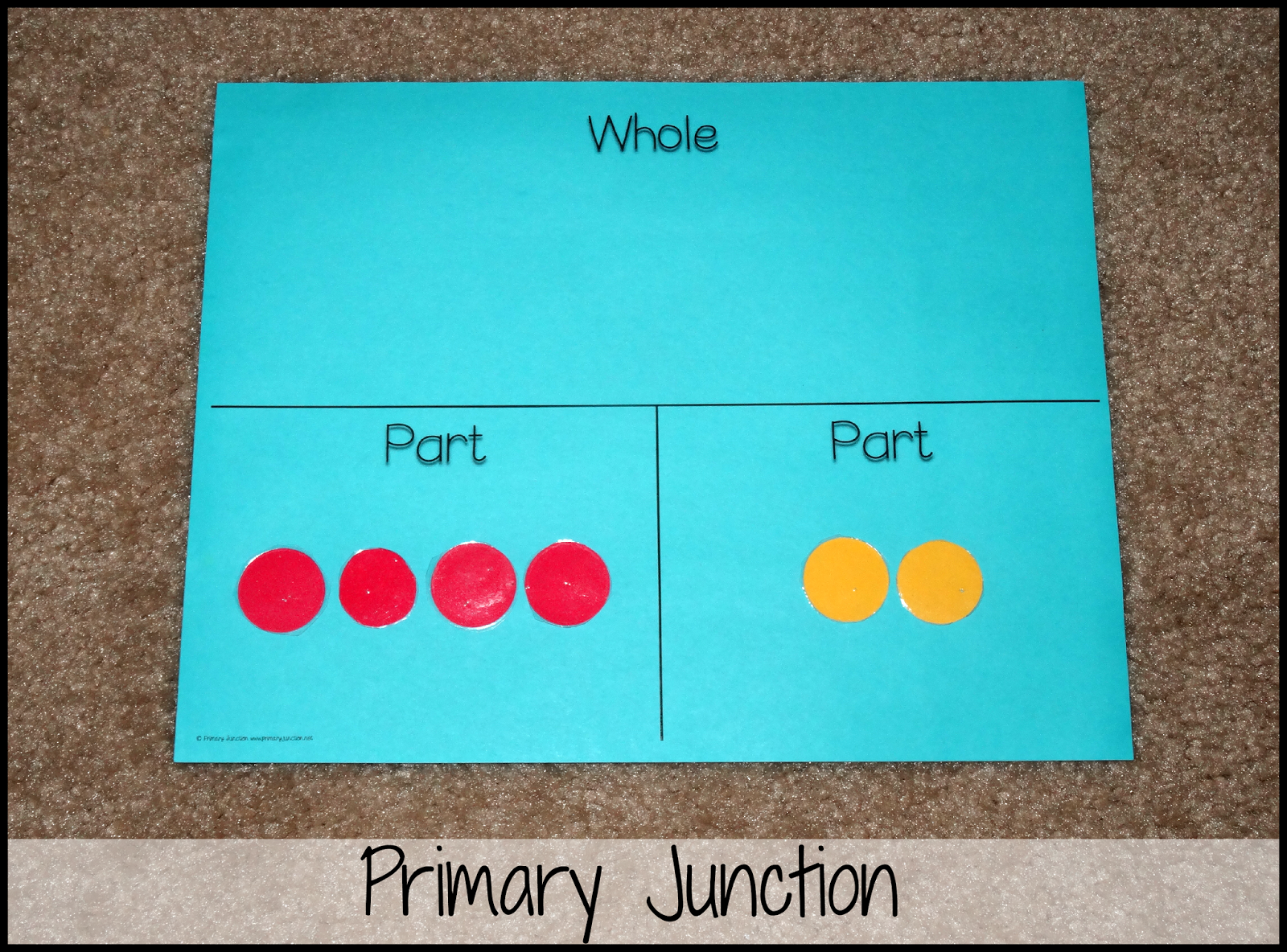The Common Core Standards ask students to explore number relationships and see numbers as parts that are put together. To help with this, part-part-whole workmats are used. Below is a lesson using them to teach students how to count on and why counting on is an effective method to solve problems.

Materials:
Part-Part-Whole Workmat – Download here
Manipulatives of Two Colors (Unifix Cubes work great!)
Steps:
1. Give each student a part-part-whole workmat and two different sets of Unifix Cubes.
2. Pose several part-part (putting two objects together) word problems to students.
An example: Jack went to the store and bought 6 red apples and 2 green apples. How many apples did Jack buy? Draw a diagram to solve the problem and explain your thinking.
3. Ask students to use the part-part-whole workmat and Unifix Cubes to solve. They should place six Unifix Cubes of one color under one “part” and two Unifix Cubes of the other color under the other “part”. Then, discuss placing them together under “whole”. How many apples are there together?
4. Now, discuss how to count on to solve this problem. It’s easy to incorporate movement into teaching students to count on. For example:
-Make a fist with one hand (just like making a “rock” for Rock, Paper, Scissors) for the bigger number (6 in this problem) and then count on with fingers (2 in this problem).
-Touch shoulders for the bigger number (6 in this problem) and then count on (2 in this problem).
-Raise hands above head for the bigger number (6 in this problem) and then count on (2 in this problem).
5. After students have had ample practice with counting on, tell them you are going to race to add this problem. Students will count on to solve the problem, while you (the teacher) will count individually to solve this problem.
6. Have an assistant or volunteer lead students in counting on (6, 7, 8) while you (the teacher) counts each cube/apple individually (1, 2, 3, 4, 5, 6, 7, 8). Students will finish counting quickly and then wait for the teacher to finish counting. This will help them see that counting on is a much quicker method for solving problems than counting individually.
Continue this method with additional problems and practice to ensure students master this concept!

